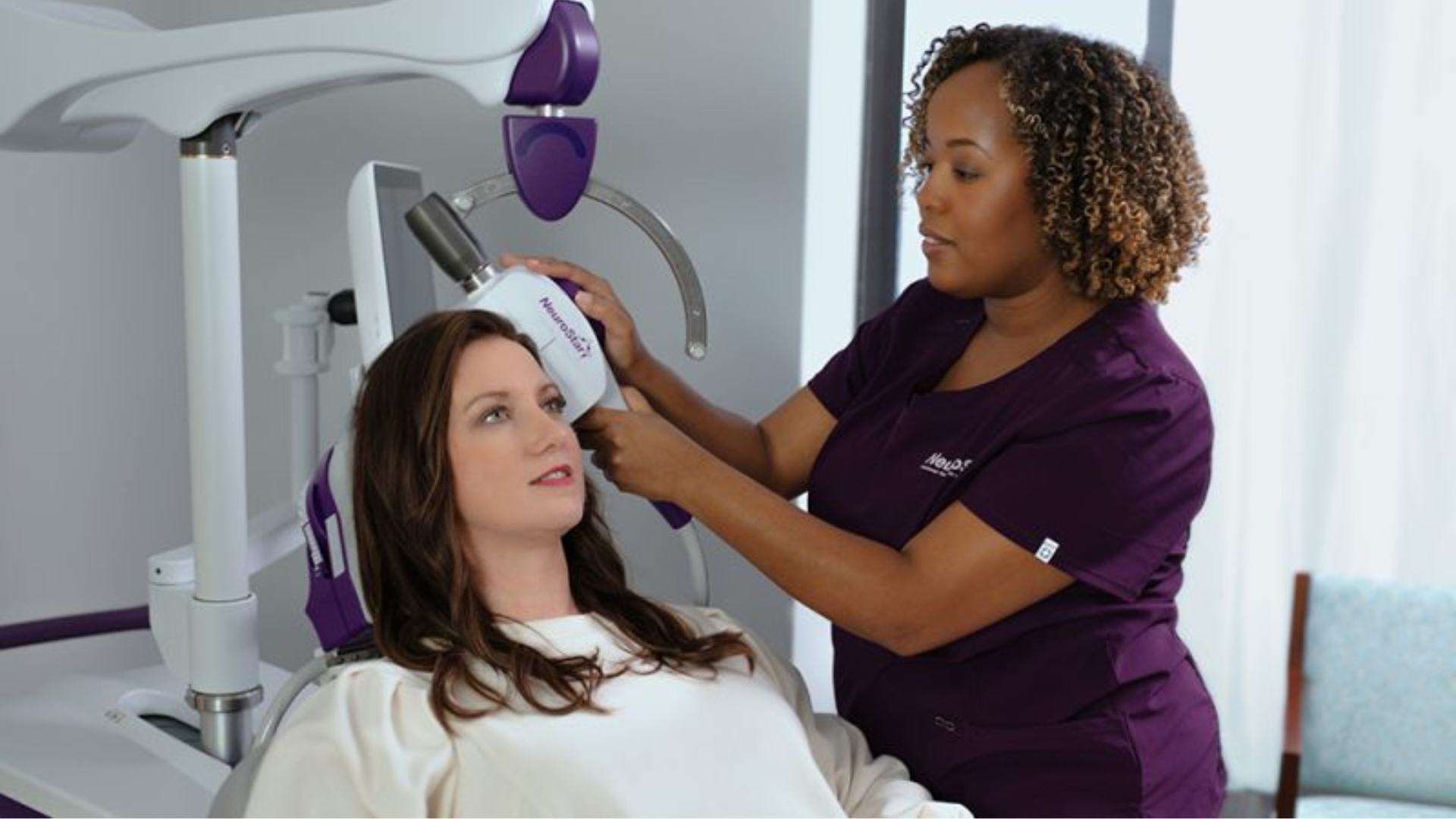When Does TMS Start Working? Timeline to Depression Relief
If you’re considering TMS therapy for depression, one of the most common questions is: when will you start feeling better? Understanding the timeline for TMS results can help set realistic expectations and provide hope during your treatment journey. At Revive Counseling in Spokane, we’re committed to providing clear, evidence-based information about this innovative depression treatment option.
Quick Summary: Key Takeaways (TLDR)
- Initial subtle improvements may occur in weeks 1-2, including better sleep and energy levels
- Most patients begin experiencing noticeable symptom relief around weeks 3-4
- Maximum benefits typically appear by weeks 5-6, which is why standard protocols last 6 weeks
- Individual response varies based on depression severity, treatment protocol, and biological factors
- For many patients, TMS benefits continue after treatment ends, with approximately 58% maintaining improvements for at least six months
Ready to Explore TMS Therapy for Depression?
If you’re struggling with depression that hasn’t responded adequately to other treatments, TMS therapy at Revive Counseling might be the breakthrough you’ve been waiting for. Our experienced mental health professionals will guide you through every step of the process, from initial evaluation to tracking your progress throughout treatment.
Understanding that the journey to recovery takes time—with most people seeing significant improvements within 3-4 weeks—can help set realistic expectations as you begin this treatment path.
Contact our team today at 509-413-2950 or through our contact page to schedule a consultation and learn if TMS could be right for you.
Understanding How TMS Therapy Treats Depression

What is Transcranial Magnetic Stimulation?
Transcranial magnetic stimulation (TMS) is a non-invasive procedure that uses magnetic fields to stimulate nerve cells in the brain. This FDA-approved treatment targets areas of the brain involved in mood regulation that may be underactive in people with depression. During a TMS session, an electromagnetic coil is placed against your scalp, delivering magnetic pulses that stimulate nerve cells in specific brain regions.
TMS therapy has emerged as an effective option for those who haven’t responded adequately to traditional depression treatments. Unlike medication, which affects the entire body, TMS targets specific brain areas involved in depression, offering a more focused approach to treatment.
How TMS Treatment Differs from Other Depression Therapies
Unlike antidepressant medications that work through chemical pathways, TMS directly stimulates brain cells using magnetic pulses. This direct approach allows TMS to bypass the systemic side effects often associated with medications like weight gain, sexual dysfunction, or digestive issues.
TMS also differs from talk therapy in its approach. While counseling services focus on psychological patterns and behavioral changes, TMS addresses the neurobiological aspects of depression. Many patients find optimal results by combining TMS with therapy, as each addresses different aspects of depression.
Unlike electroconvulsive therapy (ECT), TMS doesn’t require anesthesia or cause seizures. Patients remain awake and alert during treatment sessions and can resume normal activities immediately afterward.
Typical Timeline for TMS Results

Week 1-2: Initial Changes
During the first couple of weeks of TMS treatment, most patients don’t notice dramatic mood improvements. According to research from UCLA Health, approximately 30-40% of patients report subtle shifts in sleep patterns, energy levels, or emotional reactivity within the first five sessions, but these changes are often mild and gradual rather than sudden improvements in mood.
What you might notice during this initial treatment phase includes:
- Improved sleep quality
- Slightly more energy
- Reduced anxiety symptoms
- More emotional resilience
It’s important to note that some patients experience temporary scalp discomfort or mild headaches during the first few sessions as they adjust to the treatment. These side effects typically resolve quickly and diminish with subsequent sessions.
Weeks 3-4: When Most People Begin Noticing Improvements
By weeks 3-4 of TMS therapy, most people begin experiencing noticeable symptom relief. This is often when the therapeutic effects of the treatment start becoming more apparent. According to research published in JAMA Network Open, many patients report significant improvements in their depressive symptoms around the 12-15 session mark.
Common improvements during this phase include:
- Brightening of mood
- Increased interest in activities
- Improved concentration
- Better motivation
- Reduced feelings of hopelessness
Research from Prairie Care indicates that approximately 50-60% of patients experience meaningful improvement by the fourth week of treatment. These improvements aren’t typically all-or-nothing but rather a gradual lifting of depressive symptoms.
Weeks 5-6: Full Therapeutic Benefits
The full benefits of TMS treatment sessions typically emerge around weeks 5-6, which is why standard TMS protocols generally involve 30-36 sessions over 6-9 weeks. According to the Neuromodulation Journal, remission rates (defined as almost complete resolution of symptoms) reach 30-40% in treatment-resistant populations after completing a full course of treatment.
During this later treatment period, patients often experience:
- Stabilized mood improvements
- Enhanced cognitive function
- Improved social engagement
- Better overall functioning
- More consistent energy levels
Research indicates that extending treatment beyond the standard 4-week protocol increases remission rates significantly, underscoring the importance of completing the full recommended course of treatment.
Key Factors That Affect How Quickly TMS Works

Severity of Depression and Previous Treatments
The timeline for TMS response varies considerably based on several factors, with depression severity being a significant one. Patients with severe depression or treatment resistant depression may take longer to respond compared to those with moderate symptoms.
Research published in Clinical Psychopharmacology and Neuroscience suggests that patients who have failed multiple antidepressant medications might require 1-2 weeks longer to see significant improvements compared to those who have tried fewer treatments. This doesn’t mean TMS won’t work for treatment-resistant patients—it simply may take longer to see results.
The duration of the current depressive episode also impacts response time. Those with shorter episode duration (less than 2 years) tend to respond more quickly than those with more chronic depression.
Treatment Protocol and Session Frequency
The specific TMS protocol used can significantly impact how quickly results appear. Standard protocols typically involve:
- 5 sessions per week
- 3,000 pulses per session
- 37.5 minutes per session
- 4-6 weeks of treatment
However, some clinics offer accelerated protocols that deliver more sessions in a shorter timeframe, potentially speeding up response. These accelerated approaches might produce earlier symptom improvement but require more intensive scheduling.
The consistency of treatment also matters. Missing sessions or having irregular treatment intervals can delay progress, which is why commitment to the treatment schedule is important for optimal results.
Individual Biological Differences
Everyone’s brain is unique, and this biological individuality influences TMS response times. Factors that can affect how quickly someone responds include:
- Age (younger patients often respond more quickly)
- Genetic variations that affect neuroplasticity
- Brain connectivity patterns
- Concurrent medications
- Overall health status
These individual differences explain why two people with similar depression symptoms might experience different timelines for improvement with TMS therapy.
What to Expect During Your TMS Treatment Period
The Initial Treatment Process
Before beginning TMS, you’ll undergo a comprehensive evaluation to determine if this treatment is appropriate for your specific situation. This evaluation includes discussing your depression symptoms and previous treatment experiences.
The first TMS session involves determining the correct position and intensity for the magnetic stimulation. This “mapping” session ensures the treatment targets the correct brain area and establishes your motor threshold—the minimum stimulation needed to cause a small hand movement. This personalized calibration optimizes treatment effectiveness while maintaining safety.
After the initial setup, subsequent sessions follow a more routine pattern. Each session typically lasts 20-40 minutes, during which you’ll be awake and seated comfortably. You can read, listen to music, or chat with the technician during treatment.
Working with Your Treatment Team
Throughout your TMS course, your treatment team plays a crucial role in monitoring progress and adjusting protocols as needed. This team typically includes:
- A psychiatrist who oversees the treatment
- TMS technicians who administer the daily sessions
- Clinical staff who track your progress
Open communication with your treatment team is essential. They’ll ask about side effects, symptom changes, and any challenges you’re experiencing. This feedback helps them optimize your treatment for the best possible outcomes.
At Revive Counseling, our behavioral health services team works collaboratively to ensure you receive comprehensive care throughout your TMS journey.
Monitoring Progress and Adjusting Treatment
Throughout your TMS therapy, regular assessments help track your progress. These often include standardized depression rating scales that objectively measure symptom improvement. These assessments help determine:
- Whether you’re responding to treatment
- How quickly symptoms are improving
- Whether adjustments to the protocol might be beneficial
Some patients benefit from protocol adjustments, such as extending the treatment course if progress is slower than expected or adjusting stimulation parameters to optimize response. These decisions are made based on your individual response pattern.
Long-Term Benefits and Ongoing Maintenance
Sustained Relief from Depressive Symptoms
One of the most promising aspects of TMS is the durability of its effects. According to Prairie Care research, approximately 58% of patients who achieve remission maintain their improvements for at least six months without additional treatment. This sustained relief occurs because TMS helps “reset” brain activity patterns rather than temporarily masking symptoms.
The neuroplastic changes induced by TMS therapy can lead to lasting improvements in mood regulation and cognitive function. Many patients report that even after formal treatment ends, they continue to experience ongoing improvements as their brain continues to adapt and strengthen new neural pathways.
When Additional Sessions Might Be Needed
While many patients maintain improvements after a single treatment course, some benefit from maintenance sessions. Factors that might indicate the need for maintenance include:
- Partial response to initial treatment
- Recurrence of symptoms after initial improvement
- History of rapid relapse with other treatments
Maintenance protocols vary widely but might include:
- Monthly booster sessions
- Quarterly check-in treatments
- A shorter second course if symptoms return
Research suggests that maintenance TMS can significantly reduce relapse rates, with studies showing that monthly maintenance sessions reduce 12-month relapse rates from approximately 40% to 13%.
Frequently Asked Questions About the TMS Timeline
How does TMS help with major depressive disorder?
TMS helps with major depressive disorder by stimulating areas of the brain that regulate mood and are often underactive in depression. Using magnetic pulses, TMS activates neurons in the dorsolateral prefrontal cortex, which plays a key role in mood regulation. This stimulation helps normalize brain activity patterns and improve communication between different brain regions, addressing the neurobiological basis of depression rather than just managing symptoms.
What percentage of patients achieve complete remission with TMS?
Clinical studies indicate that approximately 30-40% of patients achieve complete remission with TMS therapy. Remission means depressive symptoms have largely resolved, allowing patients to return to normal functioning. Additionally, about 50-60% of patients experience significant improvement even if they don’t reach full remission. These success rates are particularly impressive considering that TMS is often used after other treatments have failed.
Can TMS help with post traumatic stress disorder?
Yes, research suggests TMS can help with post traumatic stress disorder (PTSD). While the FDA has not yet approved TMS specifically for PTSD, clinical studies show promising results, with some patients experiencing reduced flashbacks, anxiety, and hyperarousal symptoms. The timeline for PTSD symptom improvement with TMS is similar to depression, with noticeable changes typically beginning around weeks 3-4. Many patients with PTSD also have co-occurring depression, making TMS a potentially valuable treatment option.
How does TMS impact other mental health conditions?
Beyond depression, TMS has shown promise for other mental health conditions including anxiety disorders, obsessive-compulsive disorder (OCD), and certain addictive disorders. The timeline for improvement varies by condition. For anxiety, many patients notice reduced symptoms within 2-4 weeks. For OCD, which has an FDA-approved TMS protocol, improvements typically begin after 2-3 weeks of specialized treatment. Research into TMS applications for additional conditions continues to expand, suggesting broader potential applications for this neuromodulation approach.
Does TMS work for most patients?
While not effective for everyone, TMS works for most patients to some degree. Approximately 70-80% of patients experience at least some improvement in their symptoms, though the extent of improvement varies. Factors affecting response include depression severity, previous treatments, age, and specific symptoms. Most patients who respond to TMS begin seeing improvements by the 3-4 week mark. The high response rate makes TMS one of the more effective options for treatment-resistant depression.
Can TMS alleviate symptoms of bipolar disorder?
TMS can alleviate symptoms of bipolar disorder, particularly during depressive episodes, though it’s currently FDA-approved only for unipolar depression. Special precautions are needed when treating bipolar patients to avoid triggering manic episodes. The timeline for response in bipolar depression is similar to unipolar depression, with improvements typically beginning around weeks 3-4. Treatment protocols may differ slightly for bipolar disorder, often using bilateral stimulation rather than just left-sided stimulation to better stabilize mood.

